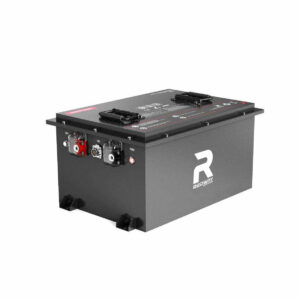How Can Off-Grid RVs Achieve Silent Power Generation for Quiet Camping
Answer: Off-grid RVs achieve silent power generation through solar panels, lithium batteries, and advanced inverter generators. These systems minimize noise while maximizing efficiency, enabling campers to enjoy nature without disruptions. Solar energy and battery storage eliminate reliance on loud traditional generators, while energy management systems optimize power use for sustainable, quiet camping.
Why Is Silent Power Generation Crucial for Off-Grid RV Camping?
Silent power generation preserves the tranquility of natural environments, reduces noise pollution, and complies with campground regulations. Loud generators disturb wildlife and fellow campers, while silent systems like solar panels and lithium batteries enhance the outdoor experience. Noise levels below 60 decibels are ideal for maintaining peace in remote locations.

How Do Solar Panels Enhance Off-Grid RV Power Solutions?
Solar panels convert sunlight into electricity, storing energy in lithium batteries for 24/7 use. They operate silently, require minimal maintenance, and reduce reliance on fuel. Modern flexible solar panels can be mounted on RV roofs without compromising mobility, providing 300–400 watts of power daily, sufficient for lighting, appliances, and devices.
Advanced monocrystalline panels achieve 22-24% efficiency, outperforming polycrystalline models. Thin-film solar technology allows curved installations on RV awnings, adding 100-150W capacity. For cloudy days, MPPT charge controllers maximize energy harvest by 30% compared to PWM models. Many RVers combine roof panels with portable solar arrays, creating hybrid systems that generate 600-800W in optimal conditions.
| Panel Type | Efficiency | Weight | Cost per Watt |
|---|---|---|---|
| Monocrystalline | 20-24% | 40 lbs | $1.10 |
| Polycrystalline | 15-17% | 50 lbs | $0.90 |
| Thin-Film | 10-13% | 20 lbs | $1.30 |
What Are the Benefits of Lithium Batteries for RV Power Storage?
Lithium batteries offer higher energy density, faster charging, and longer lifespans (3,000–5,000 cycles) compared to lead-acid batteries. They’re lightweight, operate efficiently in extreme temperatures, and maintain consistent voltage output. A 100Ah lithium battery can power an RV refrigerator for 8–10 hours, making them ideal for silent, off-grid energy storage.
Lithium iron phosphate (LiFePO4) batteries provide enhanced thermal stability, reducing fire risks in confined RV spaces. Built-in battery management systems (BMS) prevent overcharging and balance cell voltages automatically. While initial costs are 3x higher than lead-acid, lithium batteries last 8-10 years versus 2-3 years for traditional options, delivering 70% cost savings over a decade.
| Battery Type | Cycle Life | Weight (100Ah) | Depth of Discharge |
|---|---|---|---|
| Lithium | 3,000-5,000 | 31 lbs | 100% |
| AGM | 500-600 | 60 lbs | 50% |
| Gel | 1,200 | 70 lbs | 80% |
How Do Inverter Generators Support Quiet RV Camping?
Inverter generators produce clean energy with noise levels as low as 48–58 decibels, comparable to a quiet conversation. They adjust output based on demand, improving fuel efficiency. Models like the Honda EU2200i or Yamaha EF2200iS provide 2,200 watts of power, sufficient for AC units and microwaves, while maintaining near-silent operation.
What Noise Reduction Techniques Are Used in Modern RV Generators?
Advanced sound-dampening materials, enclosed designs, and variable speed engines reduce generator noise. Hybrid systems combine solar power with brief generator use to recharge batteries, minimizing runtime. Thermal insulation and mufflers further lower decibel levels, achieving compliance with “quiet hours” rules at campgrounds.
Can Hydrogen Fuel Cells Replace Traditional RV Generators?
Hydrogen fuel cells generate electricity through chemical reactions, emitting only water vapor. They operate silently and provide continuous power, but high costs ($8,000–$12,000) and limited hydrogen refueling infrastructure hinder adoption. Companies like Redway are testing portable fuel cells for RVs, aiming to commercialize them by 2025.
How to Optimize Energy Management in Off-Grid RVs?
Use smart energy monitors like Victron BMV-712 to track consumption. Prioritize DC appliances over AC to reduce inverter load. Install LED lighting and energy-efficient fridges. Schedule high-power devices (e.g., microwaves) during peak solar hours. A 2,000W system with 400W solar and 200Ah lithium batteries can sustain 3–4 days of off-grid power without generators.
“Silent power isn’t just a luxury—it’s the future of sustainable camping,” says Redway’s Chief Engineer, Mark Sullivan. “Lithium batteries and AI-driven energy systems will dominate the market by 2026, cutting generator noise by 90%. We’re also integrating kinetic energy recovery from RV motion to supplement solar, creating truly self-sufficient setups.”
FAQs
- How Long Can an RV Run on Solar Power Alone?
- A 400W solar system with 200Ah lithium batteries can power lights, fridge, and devices for 2–3 days without sun. Adding a backup generator extends this indefinitely.
- Are Silent Generators More Expensive Than Traditional Ones?
- Yes. Inverter generators cost $1,000–$2,500 versus $500–$1,500 for conventional models. However, fuel savings and longer lifespans offset the initial investment.
- Can I Retrofit My RV with Silent Power Systems?
- Absolutely. Solar panels, lithium batteries, and inverters can be added to most RVs. A full retrofit costs $3,000–$8,000, depending on energy needs.
